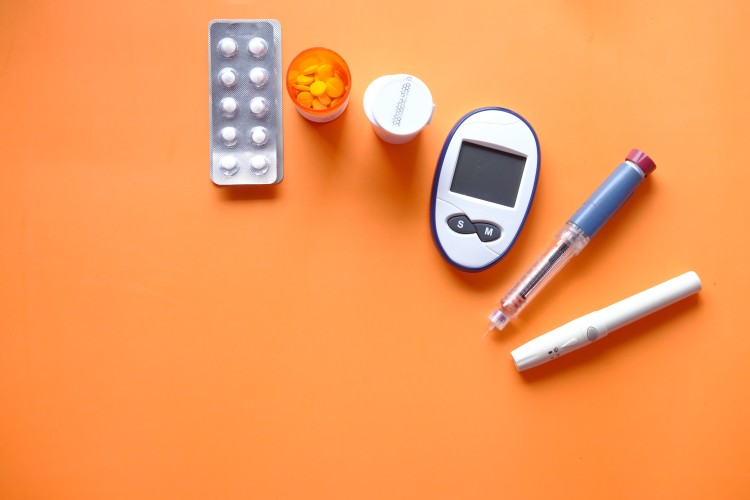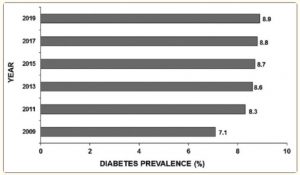
India has witnessed a dramatic increase in diabetic cases, alarmingly affecting even those under 40. Recent years have seen a 50% surge in diabetes prevalence among individuals under 40, as noted by medical consultants. No longer confined to older demographics, Type 2 diabetes is increasingly diagnosed in young individuals, particularly those under 35, with a significant rise recorded since 2002.
The Centers for Disease Control (CDC) describe diabetes as one of our time’s epidemics, with global rates nearly tripling from 2000 to 2019. This rise is often attributed to sedentary lifestyles and a growing obesity epidemic. However, questions arise about the authenticity of these cases. Are they medical realities, or fabrications driven by pharmaceutical interests?
READ | Explained: Why India is highly prone to food inflation
The industry has faced accusations of manipulating diabetes and blood pressure thresholds, inadvertently causing millions to consume medications without fully understanding the associated health risks. Despite the industry’s reputation for fostering medical innovation and prioritising public health, its primary inclination seems to be profit, often at the expense of unsuspecting citizens.
There is some evidence that pharmaceutical companies may be manipulating diabetes thresholds to sell more drugs. For example, in 2012, a Reuters investigation found that an insulin maker led a campaign to lower the A1c target for diabetes from 7% to 6.5%. This change meant that more people would be diagnosed with diabetes and require treatment, which would benefit pharmaceutical companies.
Diabetes prevalence
The American Diabetes Association, a leading authority on diabetes, has also been criticised for its close ties to pharmaceutical companies. The ADA has received millions of dollars in funding from pharmaceutical companies, and some of its members have served as consultants to these companies. As a result, there have been concerns that the ADA’s recommendations on diabetes treatment may be biased in favour of pharmaceutical interests.
However, it is important to note that the ADA’s recommendations are based on scientific evidence. The organisation has a rigorous process for developing its guidelines, and it includes experts from a variety of fields, including academia, clinical practice, and patient advocacy. Additionally, the ADA’s recommendations are regularly updated to reflect the latest scientific evidence.
The diabetes market is a case in point. The US-based National Library of Medicine reports that corporate entities are redefining illness, health, and treatment guidelines for type 2 diabetes and prediabetes. This redefinition has notably expanded the population prescribed diabetes drugs, turning it into a billion-dollar market.
All medications carry side effects, and diabetes medicines are no exception. The drugs recommended for diabetes, often accompanied by major complications, contribute significantly to the pharmaceutical industry’s growth, particularly in treating chronic conditions like hypertension and hyperlipidaemia.
Researchers in the study “Are Corporations Re-Defining Illness and Health? The Diabetes Epidemic, Goal Numbers, and Blockbuster Drugs” express concern over the lack of oversight in standard-setting committees regarding the long-term impacts of these drugs.
The Indian pharmaceutical industry’s shortcomings are well-documented. In “Bottle of Lies,” investigative journalist Katherine Eban exposes fraud and deception by major pharma players. Similarly, “Truth Pill” by Dinesh Singh and Prashant Reddy highlights the Indian state’s negligence towards a quality crisis in its domestic pharmaceutical market, leading to fatalities in India and abroad. The authors note the presence of outdated or absent regulations in certain areas.
Diabetes in India is reaching alarming proportions. According to Metropolis Healthcare, nearly 40% of the adult population is diabetic, with a higher 40.31% being prediabetic – a notable increase from previous years. The risk of developing diabetes over a lifetime for adults over 20 years is 50%, escalating with age and obesity. Men have a higher prevalence of diabetes than women, with rates just over 7% in men compared to just over 5% in women.
A concerning trend in India is the silent progression of diabetes. Many patients remain unaware of their condition, leading to gradual damage to vital organs like the heart, kidneys, liver, and pancreas. The International Diabetes Federation reports that seven out of 10 diabetics are diagnosed following complications. Lack of early detection severely impacts kidney and heart health.
Eroding confidence in India’s pharmaceutical industry calls for an urgent overhaul to preserve its global reputation. Contrarily, the government has been easing regulations in the pharma sector, enabling corporations to exploit loopholes for profit. In August 2022, Policy Circle argued for a shift in government focus from appeasing businesses to ensuring public well-being.
The government and policymakers must exercise caution, limiting the pharmaceutical industry’s influence over medical practice and knowledge. When commercial interests shape scientific knowledge production, interpretation, application, and regulatory oversight, public health risks become a concerning reality.


